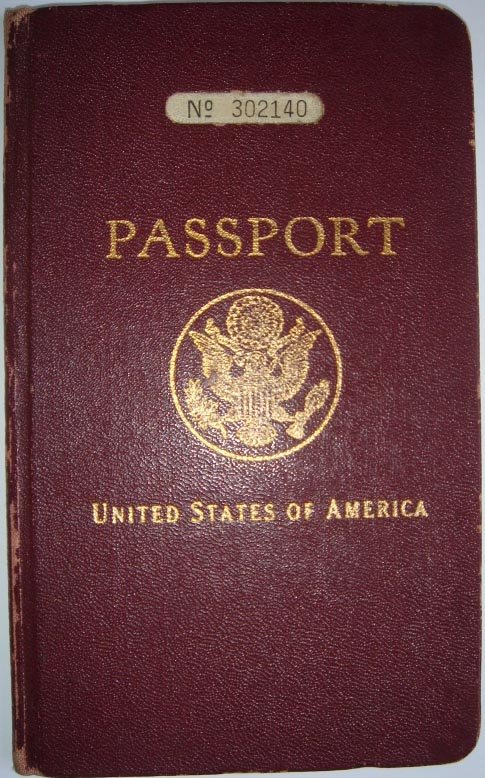Imagine you’re standing in line at the airport, heart pounding, palms sweaty, and you suddenly wonder, “Did I bring the right ID? What if my passport isn’t valid long enough?” You’re not alone. Even the most seasoned globetrotters get tripped up by persistent myths about U.S. passports. These misconceptions can turn excitement into anxiety and even derail a dream trip. Let’s clear the fog, crush the rumors, and get you ready to travel smarter—no more passport panic attacks on your travel bucket list.
You Need a Passport for Domestic Travel

It’s wild how many travelers still pack their passports for a simple trip from New York to Los Angeles. The truth is, you won’t need your passport to fly anywhere within the 50 states. All you need is a government-issued photo ID, like your driver’s license or a state ID card. For U.S. territories—think Puerto Rico, Guam, or the U.S. Virgin Islands—your regular ID is still enough. There’s a certain freedom in knowing you can hop on a flight to the sun-drenched beaches of Hawaii or the neon-lit streets of Las Vegas without digging out your passport. Save that precious document for international adventures, and travel lighter on your next stateside escape.
Your Passport Must Be Valid for Six Months

Picture this: you’ve meticulously planned an Italian getaway, only to hear from a friend that you need six months left on your passport. Panic sets in—but is it true? Not always. While some countries, like Thailand and Turkey, demand six months of validity, many others—such as Canada, Mexico, and most of Europe—require only that your passport is valid for the duration of your stay. Still, it’s a strong move to check your destination’s rules before booking. A simple search can save you from a last-minute scramble or a heartbreak at the airport gate. Don’t let this myth block your adventure; just double-check and travel on.
You Can’t Renew Your Passport While Traveling

Lost or expiring passport while abroad? It feels like a nightmare, but you’re not stranded. Many U.S. travelers believe they have to be on American soil to renew their passport—definitely not true. U.S. embassies and consulates around the world can help you renew it. The process might take a bit longer than back home, and you’ll need the right paperwork and a new photo. It’s smart to keep digital copies of your documents and know where the nearest embassy is, just in case. With a little planning, you can swap panic for peace of mind and keep your travel story rolling.
All Countries Require a Visa

If the idea of collecting visas for every trip makes your head spin, you’re not alone. It’s a common misconception that a passport and a visa always go hand in hand. The reality? U.S. passport holders enjoy visa-free or visa-on-arrival access to over 180 countries. From sipping espresso in Italy to hiking the Andes in Peru, most destinations only require your passport and a smile. Some places, like China or Russia, do still require a visa, but for many dream trips, the process is much simpler than you’d think. Always check before you go, but don’t let this myth keep you from exploring.
Your Passport Will Expire While Traveling

There’s a lingering fear that passports can somehow expire mid-trip, leaving you stuck. The good news: passports don’t magically lose their power while you’re away. What matters most is the expiration date before you leave. Some countries will deny entry if your passport is too close to expiring, so always check both the outbound and return dates. If you’re planning to be gone for a while—a semester abroad, maybe, or a long honeymoon—make sure your passport is good for at least the length of your adventure. A quick check now saves a world of stress later.
You Can’t Travel if Your Passport is Damaged

We’ve all been there—spilled coffee, a sudden rainstorm, or a backpack zipper gone rogue. Many believe that any sign of damage means your passport is useless. The truth is, minor scuffs, bent covers, or a bit of wear aren’t usually a problem. What’s risky is severe damage: missing pages, torn covers, or waterlogged papers. If your photo or personal info is illegible, you could be denied boarding or entry. It’s always smart to err on the side of caution: if your passport looks like it’s been through a blender, get a replacement before you travel.
You Need a Passport for Cruises

Cruise lovers, this one’s for you. There’s a big myth that you always need a passport for cruises leaving from the U.S. For “closed-loop” cruises—meaning those that start and end at the same U.S. port—you can usually cruise with just a government-issued ID and an official birth certificate. But, if an emergency comes up and you need to fly home from a foreign port, you’ll wish you had your passport. Think of a passport as your travel safety net: not always required, but always a smart backup. That extra peace of mind can make your days on deck even more relaxing.
Passport Photos Are Easy to Get

Walking into a pharmacy for a quick passport photo sounds easy, but the reality can be surprisingly tricky. The U.S. has strict guidelines: neutral expression, plain white background, no hats or glasses, and exact sizing. Even a small shadow or the wrong crop can get your application rejected. It’s worth double-checking the requirements before you snap that shot. Some travelers have had to retake photos multiple times—delaying their applications and their travel dreams. For the best results, visit a professional or use an official passport photo service. That perfect photo is your ticket to the world.
You Can Travel Without a Passport if You’re a Minor

It’s easy to assume kids don’t need passports, especially for family vacations. But if you’re crossing a border—even to Canada or Mexico—every traveler, regardless of age, must have their own valid passport. This includes tiny newborns and toddlers. Applying for a child’s passport does take extra documentation and, often, both parents’ permission. It’s smart to start early, especially before busy travel seasons. The look on your child’s face when they get their own passport stamp makes the effort entirely worth it.
You Can’t Change Your Name on Your Passport

Life changes—marriage, divorce, or even a personal decision—sometimes mean a new name. Many travelers think updating a passport is a bureaucratic nightmare. It’s actually pretty straightforward. With the proper documents (like a marriage certificate or court order), you can apply for a name change. You’ll need a new photo and the right forms, but the process is clear-cut. Travelers have shared stories of flying under their old names and facing confusion at customs—save yourself the hassle and update your passport before you book that next trip.








